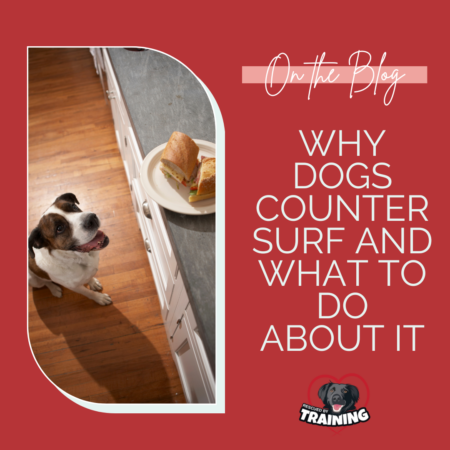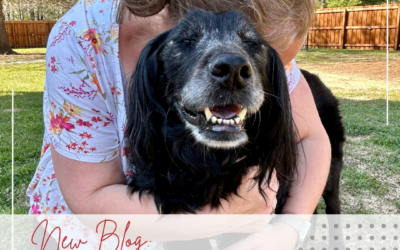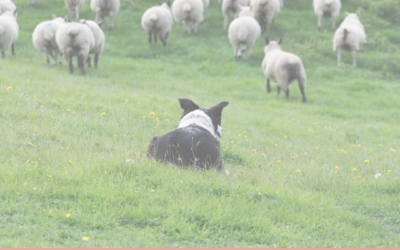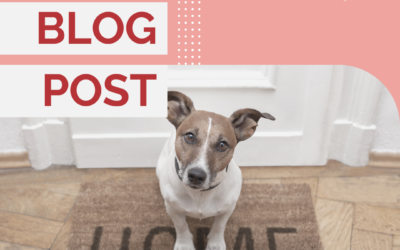When we first adopted Barbo, and left him alone for the first time, we came home and I started to make dinner and couldn’t find the baguette I was certain I had purchased earlier that day. I checked the car, my receipt and just assumed maybe it got left behind when the groceries got bagged up. A few hours later, I sat on the couch and tucked in between the cushions was a half eaten baguette. Mr. Barbo had counter surfed (and then cached the part he didn’t finish!) I wasn’t upset, I remember laughing and laughing at his antics.
Over the years, he’d have instances of counter surfing, maybe one or two incidents a year, almost always something bready (guess he liked carbs!) and as he aged, I actually took delight in it a bit – that he still had it in him! One of my favorite, was this one, caught by our security camera, of him using the lazy Susan on the table to get the biscuit that was included in the PetMeds box that I had left out. 100% my fault but take a moment to marvel at his persistence and figure out how the lazy Susan worked to get what he wanted!
So why do dogs counter surf or trash dive? Dogs are natural scavengers. Even though our pet dogs get fed on regular schedules, wild dogs scavenge and eat opportunistically – whenever they have a chance to get food. So our pet dogs still have this hardwired into them and have a need to scavenge and find food. And for many dogs, they like the challenge and think it’s fun! Many animals prefer to work for their food than get it for free. The concept of contrafreeloading, that offered a choice between free food or the same food that requires work to get, the animal prefers the food that requires effort, was first noted by Glen Jesen in 1963. And now many zoos use this for their captive animals to increase their quality of life. See a meerkat here working for the food instead of just eating the same food that is in the feeding bucket. Here’s another example with a pig named Kevin. The takeaway is this: an animal using their natural skills and instincts to procure food is reinforcing to them.
In fact, I had a client come to me once, referred from her vet after a full medical workup for anorexia, and the vet had determined this must be behavioral because there was nothing physically wrong with this dog. Bloodwork, ultrasound, endoscopy, CT scan – everything was perfect. So why was she anorexic? After lots of sleuth work, ruling out fear, anxiety and other things that often cause dogs not to eat, I determined she would only eat if food was presented in enrichment toys or in the context of training. Free food on a plate, even freshly grilled meats, she would snub. The same food in a Kong or other feeding toy or as a reward for doing a training cue, she’d gobble it up.
Counter surfing and trash digging are two easily accessible ways for dogs to scavenge in our homes and usually they’re successful – usually they get some sort of goodie, so that behavior is reinforced. We know that one of the ways dogs learn (download my infographic here) is by doing what works and repeating it. So, if counter surfing or trash diving results in yummy snacks repeatedly, we will see an increase in counter surfing and trash diving. Dogs do what works.
What can you do? What not to do and some myth busting:
- Prevention – The most important thing is never let your dog learn that counter surfing or trash digging works. Ensure your dog is being fed the proper amount of food, so they’re not left hungry to go look for other food sources. Preventing them from learning this habit is the best way to never have to deal with it. If that ship has sailed, read on.
- Management – Scavenger proof your home, just like you would baby proof your home if you had a toddler. Keep your countertops clear! No food, including fruits and veggies, are to be left on the counter. All food goes into cabinets, with door latches, if needed. Trash bins should have lids and then go into a closed cabinet with a latch or behind a closed door. Use baby gates (or install a door on your kitchen) that you can close when the kitchen is unsupervised or when you’re cooking and you have lots of food out.
- Enrichment – I recently wrote about enrichment not being optional but we can channel the need to scavenge into enrichment and training opportunities. We can use food toys or games that give your dog outlets for scavenging in ways we approve. We can train skills like Find It also that tap into the scavenging instincts so we have it on cue!
- Training – Working on training skills around food and food prep, like having a rock solid down/stay on a mat in the kitchen or dining room, or a leave it, can be valuable skills to teach your dog for being around food, but won’t directly stop counter surfing. But still, these skills can be helpful if you drop food, have food on tables or just want a skill to ask your dog to do when you’re sitting having a meal.
- Avoid punishment/deterrents – While there are products sold that purport to deter counter surfing, not only are these generally ineffective, but they “work” by scaring or hurting the dog, which can have unwanted long lasting effects. I had a client dog once whose owner had used hidden mouse traps that went off when the dog put his paws on the counter and then they came to me for a severe paw handling and nail trimming phobia. Punishment won’t take away your dog’s need to scavenge – it will likely just make him afraid or will teach him not to scavenge in your presence. It could even make your dog more crafty to get to what he wants!
- Myth Busting – Food is food. To your dog, lots of things are edible that we think are gross. Your dog doesn’t “know better” or “should know better.” He doesn’t know what is his food versus your food. He knows what smells interesting to him. This could be your dinner, trash on the sideway, a dead fish on the beach, food you’re using for training or your baby’s bib. Dogs will consume many things if we’re not careful, so do not believe the myth that dogs have some sense of what’s yours or what he “should” eat. To him, everything is fair game.
One last point about this topic. what if you catch your dog in the act? What should you do? If there is a management fail and you catch your dog about to counter surf, you can interrupt by asking him to do an alternate behavior, like a recall or touch. But, a word of caution here. Smart dogs can learn this behavior pattern: Jump on the counter, mom asks for a recall, and then I get rewarded. So the way to get the food at the end is to jump on the counter first. If this pattern happens enough times, you will likely get an increase in counter surfing, which is why management and prevention is so critical.
Counter surfing and trash diving are always enrichment red flags for me so I really encourage you to think about What’s Your Dog Trying To Tell You? Do they have an unmet need?
Do you need help? Grab a session with me here. And be sure to sign up for my free weekly newsletter so you don’t miss out on free tips, videos, personal stories, client successes and more!
Happy training!
![]()




